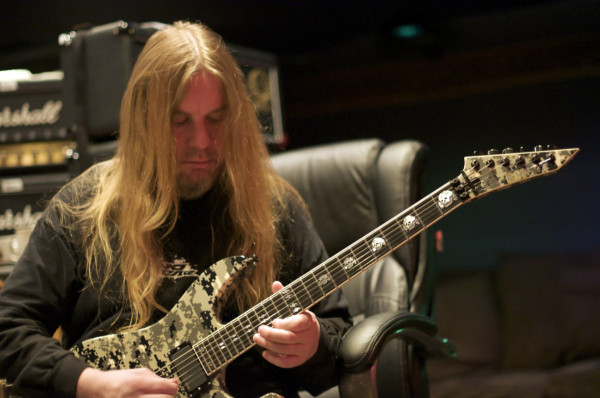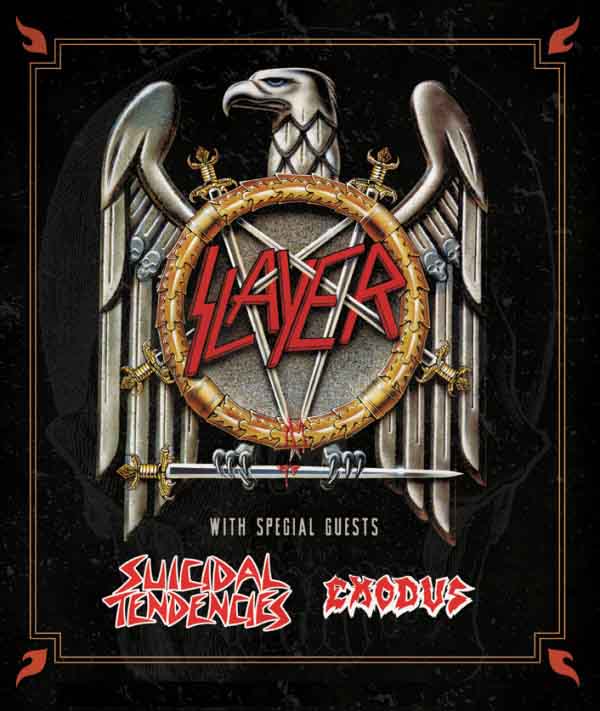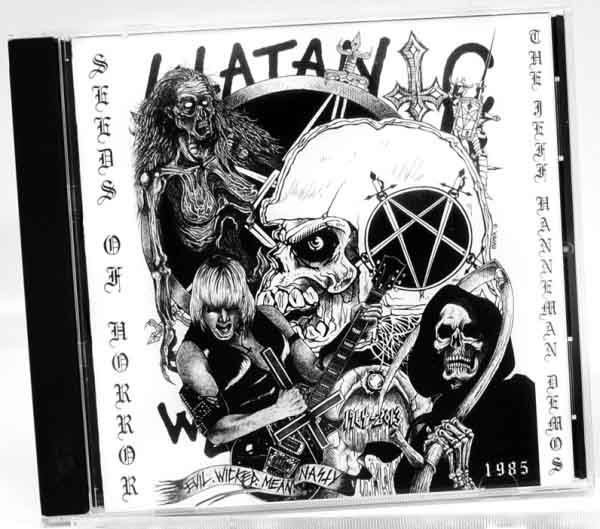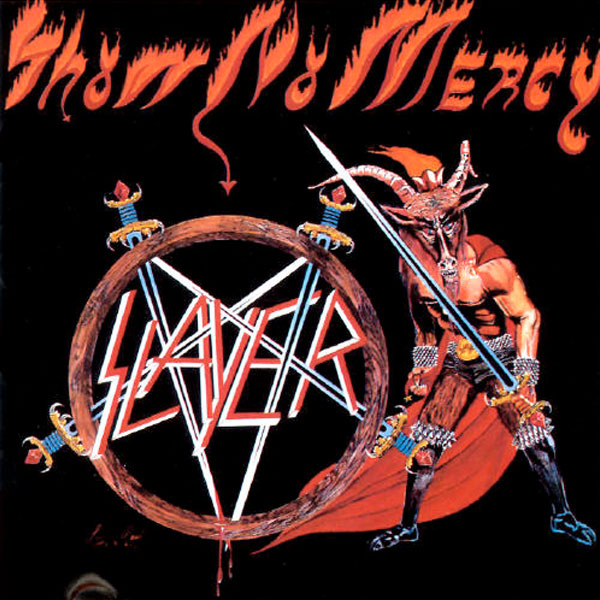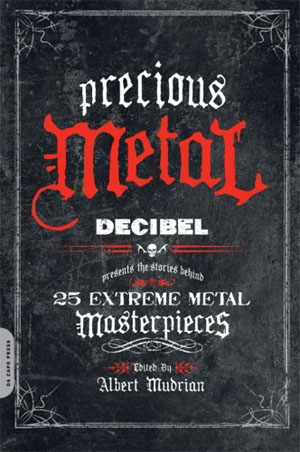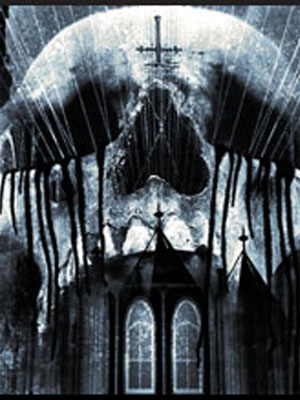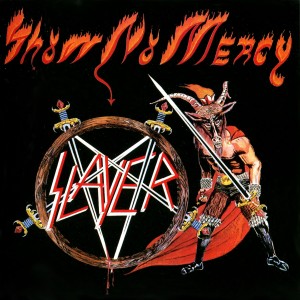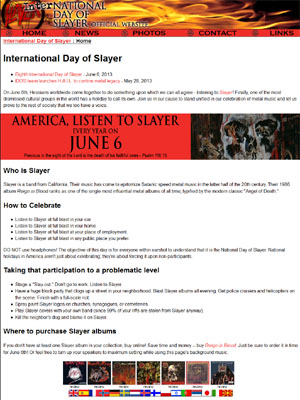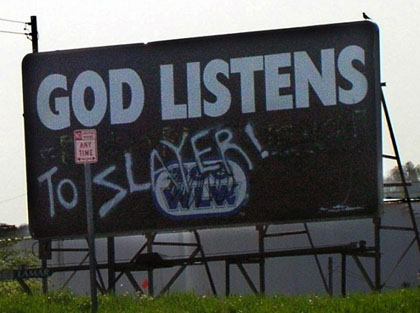Today, Jeff Hanneman would have been fifty years old. The man who helped invent the sound that underlies all of underground death metal did not, as the people around him in the LA suburbs tend to do, waste his life away in repetition. Instead, he forged his own path and we celebrate him for it and the results of it.
Way back in 1983, as now, the holy grail of alienated music was the fusion of any two of its genres: metal, punk and industrial. Specifically there was great interest in using its guitar-based genres to create a new sound. Many people attempted to fuse metal and punk, and many credible sounds came out of it. One path was speed metal, which Metallica unleashed with Kill ‘Em All. Another was thrash, which DRI cut loose with Dirty Rotten LP. But still another was the foundation of death metal and black metal which was introduced by Slayer and refined the following year by Bathory, Hellhammer and Sodom.
Slayer took two things from punk and injected them into the prog-influenced songs structures of NWOBHM: they borrowed the constant tremolo strum, used by punk for drone, and the open drum patterns that allowed guitar to take the lead. Now a new style of music emerged. Rhythm guitar became the lead instrument, rapid-firing changing riffs at the audience while drums framed but did not lead the development. Riffs did not have to perfectly fit the drums which kept going in the background as a kind of timekeeper but not, as in most bands, a way of signaling the guitar to change. Further, riffs became phrasal, building on the longer chord progressions of Black Sabbath to become fully small melodies, developing in response to on another like classical motifs.
Music teachers, who were raised in the rock/jazz idea that drums lead and riffs should emphasize harmonic and a static melodic role, with the primary melodic role and lead instrument (and thus impetus for song “development”) being the voice, found Slayer to be unmusical. The record industry was appalled at this creation that unleashed the demonic side of life in such clarity; they make their money from selling happy illusions, not grim realities translated into elaborately conceived mythologies.
And yet it is this mythological tendency, dating back to “War Pigs,” that saves metal from self-consuming and burning out like hardcore punk. It is not literal; it is imaginative. It turns our focus from ourselves to the nature of power, history, nature and other forces larger than the individual, and then lets us imagine the greatness of participation in those. Where punk turned reality into a protest weapon and source of alienation, metal has turned it into a source of individual desire to do something epic with our lives. Slayer gave that mythological tendency a new voice, not just by singing about demons, vampires and The Holocaust, but by translating the sound of raw power into something you could throw on your bedroom hi-fi and be transported to a different world.
For this reason, Slayer captured the imagination of a generation and continues to enthrall us today. The early albums, which are completely written in horror movie mythology, incite in us a desire to see the hidden possibly occult underpinnings of a society gone insane. The Reign in Blood and afterwards material shows us a more punk-like grasp of all that terrifies us and sends us searching for reasons why, and if not why, how to use such things as war, murder and sadism in some constructive way. Slayer is not protest music; it acknowledges the horror, but doesn’t want to band us together into a drum circle to “stop” these horrors. It recognizes they are eternal. Instead, like the religion it loathed, Slayer drives us to find a way to accept these things as part of life itself, and look for a philosophy that shows us a reason to survive despite all these horrors.
Jeff Hanneman’s influence pervades the Slayer story. He wrote many of the band’s most epic and enduring songs, contributed the mythological outlook, and invented the musical changes described above. While he may be slighted by the Grammy’s, or ignored by a world of people seeking Shakira tunes instead of imaginative but realist metal, to those who can understand his trip — already a naturally elite group — Hanneman’s work is not just a source of wisdom, but of inspiration. In a world asleep, he stayed awake. In a world of imitation, he took his own path. Where most just wanted to participate for reward, he took on life at its most basic level and triumphed. For that reason, we’ll always celebrate his life and work.
Chaos rampant,
An age of distrust.
Confrontations.
Impulsive sabbath.
On and on, south of heaven
Tags: death metal, extreme metal, Heavy Metal, jeff hanneman, NWOBHM, punk, slayer, underground metal
